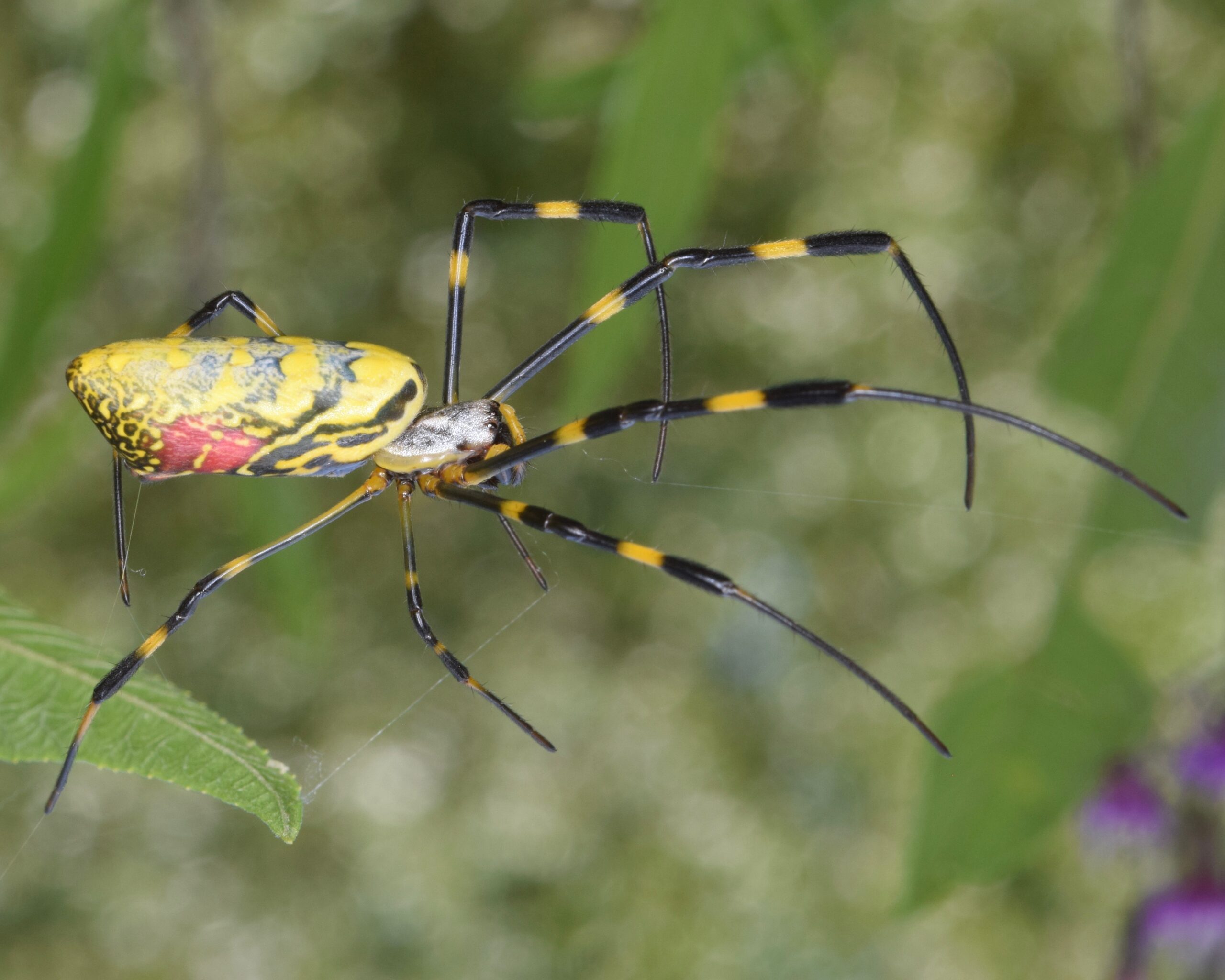Nature
Fascinating World of Facts: A Journey Through Datos Curiosos

Nature
Kennedy Funding Ripoff Report – Truth, Myths, and Insights

Kennedy Funding Ripoff Report – Truth, Myths, and Insights
In the world of private lending, few names stir as much debate as Kennedy Funding, a financial institution specializing in unconventional lending solutions. Over the years, the company has attracted both praise and criticism, leading to the emergence of the widely discussed kennedy funding ripoff report. While some see the company as a lifeline for borrowers unable to secure traditional financing, others view it with skepticism.
This article explores the controversies, allegations, and realities surrounding Kennedy Funding, while also examining why such discussions surface in the financial sector. By unpacking the claims and analyzing the facts, we’ll provide a balanced look at whether the criticisms hold weight or stem from misunderstandings about private lending.
Understanding Kennedy Funding’s Business Model
Kennedy Funding operates within the niche world of private lending, often stepping in when banks and conventional financial institutions refuse to provide loans. Their primary services include:
-
Bridge loans for real estate projects.
-
Acquisition financing for developers and investors.
-
International lending in challenging markets.
-
Short-term funding for time-sensitive deals.
Unlike traditional banks, private lenders like Kennedy Funding take on higher-risk clients. These are often individuals or businesses with urgent financing needs, incomplete documentation, or unconventional projects that mainstream banks won’t support. Because of the risks, interest rates and fees are generally higher, which sometimes triggers disputes and allegations of unfair practices.
Why Do Ripoff Reports Appear in Finance?
The financial sector is no stranger to online allegations. A ripoff report is essentially an online platform for dissatisfied customers to voice complaints, often without verification. While such reports give borrowers a way to express frustration, they also leave room for exaggeration, incomplete stories, or even misleading narratives.
In the case of Kennedy Funding, ripoff reports have surfaced primarily due to:
-
High fees and interest rates compared to banks.
-
Loan terms that some borrowers found difficult to meet.
-
Deals falling through because of documentation or valuation issues.
-
Disputes over international funding transactions.
It is important to remember that such complaints are common in the private lending world. Whenever large sums of money are involved, dissatisfaction is inevitable.
Examining the Kennedy Funding Ripoff Report
The term kennedy funding ripoff report typically refers to a collection of complaints from borrowers who felt their loan terms were unfair or who experienced challenges in securing the promised funding. Some of the main allegations include:
-
Hidden costs: Borrowers claim unexpected fees appeared during negotiations.
-
Complex requirements: Clients argue the lending process was more complicated than initially presented.
-
Unfulfilled expectations: Certain applicants believed they would be approved, only to have funding delayed or denied after initial approval stages.
However, financial experts note that such issues are not unique to Kennedy Funding. Most private lenders operate under tight conditions, and misunderstandings between lenders and borrowers are common.
The Other Side of the Story
While criticisms exist, Kennedy Funding also has numerous supporters who argue that without the company’s services, many projects would never have materialized. These include:
-
Real estate developers who obtained quick funding when banks refused.
-
International clients who secured financing for land development.
-
Small businesses that needed urgent capital.
For these clients, Kennedy Funding provided access to resources that were otherwise out of reach. This positive perspective highlights the divide between satisfied and dissatisfied clients, showing that experiences can vary significantly.
Common Misunderstandings About Private Lending
The controversy surrounding Kennedy Funding highlights common misconceptions in private finance. Some borrowers enter agreements expecting terms similar to traditional banks, but private lending works differently. Key points include:
-
Higher Risk, Higher Costs
Private lenders take on clients who are often considered too risky by banks. As a result, interest rates and fees are naturally higher. -
Collateral and Valuation
Many disputes arise from disagreements over property valuations used as collateral. If borrowers overestimate their property’s value, funding complications can occur. -
International Complexity
Global deals often involve regulatory and legal challenges. Delays or denials in funding may result not from deception but from jurisdictional complications. -
Transparency in Terms
Borrowers sometimes misinterpret loan conditions. This is why financial literacy and professional advice are crucial before entering agreements.
The Role of Reputation in Finance
In today’s digital age, reputation is everything. A single ripoff report can influence public perception of a company, even if the claims lack context or verification. For Kennedy Funding, this has been a challenge, as the repeated use of the term kennedy funding ripoff report creates an impression of widespread malpractice, even though the truth may be more nuanced.
Financial institutions are particularly vulnerable to this type of reputation damage. Unlike products that can be tested and reviewed easily, financial services are highly complex and subject to interpretation.
Lessons for Borrowers
Regardless of the controversies, there are clear lessons that potential borrowers can learn from the Kennedy Funding debate:
-
Always read the fine print: Contracts may include terms that seem unfavorable, but transparency is key.
-
Hire financial advisors: Professionals can help evaluate whether terms are reasonable.
-
Compare lenders: Borrowers should never rush into agreements without exploring alternatives.
-
Prepare documentation: Many disputes arise when paperwork is incomplete or inaccurate.
By taking these steps, borrowers can reduce the risk of misunderstanding and ensure smoother financial transactions.
Broader Implications for the Lending Industry
The Kennedy Funding case reflects larger issues in the financial sector. The tension between borrowers and lenders often comes down to communication, expectations, and financial literacy.
For the industry, it’s a reminder that:
-
Transparency builds trust.
-
Borrower education reduces disputes.
-
Global lending requires careful navigation of laws and regulations.
By addressing these points, the lending industry as a whole can improve its reputation and reduce the frequency of disputes leading to ripoff reports.
Balancing Criticism and Success Stories
The reality is that Kennedy Funding has both critics and loyal clients. The presence of negative reports doesn’t erase the fact that the company has facilitated billions in funding worldwide. Conversely, positive outcomes don’t dismiss the genuine frustrations some clients have experienced.
This duality is common in finance. Every lender—from large banks to boutique firms—faces scrutiny. What matters most is how companies address complaints, improve communication, and evolve with the needs of the market.
Conclusion – Finding the Truth Beyond the Ripoff Report
The ongoing debate around Kennedy Funding highlights the complexity of private lending. While the kennedy funding ripoff report has fueled skepticism, it’s important to approach such claims with critical thinking.
For borrowers, the lesson is to be vigilant, informed, and realistic about private financing. For lenders, the challenge is to improve transparency and manage expectations effectively.
In the end, Kennedy Funding remains a key player in its niche, offering opportunities where traditional banks fall short. Whether seen as a controversial lender or a financial lifeline, the truth lies somewhere between criticism and success, reminding us that finance is as much about perception as it is about numbers.
Nature
Football Night in America Hosts: Stars Behind NFL’s TV Magic

Football Night in America Hosts: The Faces of NFL Sundays
Football Night in America has become an iconic television tradition for NFL fans, delivering thrilling pre-game coverage and expert analysis every Sunday. While the on-field action is the main attraction, the hosts behind the broadcast play a pivotal role in creating an engaging experience for viewers. These hosts not only provide insights but also set the tone for the entire night, making them indispensable to the NFL viewing experience.
The role of football night in America hosts goes far beyond simple introductions. They combine storytelling, statistics, interviews, and even humor to create a comprehensive pre-game show that appeals to casual viewers and die-hard fans alike. From analyzing the latest player performances to predicting game outcomes, these hosts are the bridge between the game and the audience.
The Evolution of Football Night in America Hosts
Since its debut in 2006, Football Night in America has evolved into more than just a pre-game show. Originally designed to offer NFL fans a comprehensive preview of Sunday games, the program has consistently expanded its roster of hosts and analysts to include seasoned sportscasters, former players, and expert commentators.
The show’s hosts bring a unique blend of credibility and charisma. Veteran anchors often anchor the program with authority, while former players provide insider perspectives on team strategies, player psychology, and the nuances of the game. This combination ensures that viewers get a multifaceted experience every week.
Over the years, the hosting team has also adapted to technological advancements. With high-definition broadcasts, interactive graphics, and real-time statistics, the hosts now have more tools than ever to enhance the viewer experience. Yet, despite these innovations, the core of the show remains the same: connecting fans to the game through insightful commentary and engaging presentation.
Iconic Hosts and Their Contributions
One of the standout elements of Football Night in America is its rotating cast of hosts who bring diverse perspectives and personalities to the screen. Some hosts have become synonymous with NFL Sundays due to their long-standing presence and in-depth knowledge.
Experienced broadcasters often set the pace of the show, balancing analysis with entertainment. Meanwhile, former players provide firsthand experience, often sharing stories from their own careers or dissecting plays with precision. Analysts specializing in statistics, scouting, and coaching further enrich the program, ensuring that every segment is informative and engaging.
The chemistry among these hosts is another key factor in the show’s success. Their interactions create a natural and entertaining flow that keeps viewers engaged from the opening segment to the kickoff. By combining humor, debate, and professional insight, the hosts create a dynamic that resonates with a wide range of viewers.
Behind the Scenes: The Making of a Pre-Game Show
Football night in America hosts do not operate in isolation. Behind every broadcast is a dedicated production team that coordinates camera angles, graphics, interviews, and live updates. The hosts work closely with producers, researchers, and technical staff to ensure that every segment runs smoothly.
Preparation is a crucial aspect of their job. Hosts often spend hours reviewing player statistics, team histories, injury reports, and recent performances to provide accurate and insightful commentary. Interviews with coaches and players are meticulously prepared to extract meaningful insights that viewers cannot find elsewhere.
Moreover, the hosts often have to adapt to live changes, such as last-minute player updates, unexpected weather conditions, or breaking news. Their ability to maintain composure and deliver coherent analysis in real-time is what separates professional hosts from ordinary commentators.
The Impact on Fans and NFL Culture
The influence of football night in America hosts extends beyond the television screen. Their analysis, predictions, and interviews often spark discussions on social media, sports blogs, and fan forums. Fans rely on their expertise to gain a deeper understanding of the game, making the hosts an integral part of NFL culture.
Additionally, these hosts contribute to the entertainment value of Sunday football. Their humor, anecdotes, and storytelling make the pre-game experience enjoyable for casual viewers who may not be familiar with the technical aspects of the game. By making football accessible to a broader audience, they help grow the sport’s fan base.
The presence of well-known hosts can also affect viewership ratings. Iconic personalities draw in audiences, sometimes as much as the games themselves. For many fans, tuning in to see their favorite hosts discuss the latest NFL news is a weekly ritual, highlighting the hosts’ central role in the overall football experience.
Challenges Faced by Football Night in America Hosts
Despite the glamour associated with being on national television, football night in America hosts face numerous challenges. Balancing factual reporting with engaging entertainment requires skill and experience. Misstatements or inaccurate predictions can lead to criticism from fans and analysts alike.
Moreover, hosts must maintain neutrality while discussing teams, players, and controversial incidents. Bias or favoritism can compromise credibility, making professionalism an essential part of the job. The fast-paced nature of live broadcasts also demands quick thinking and adaptability, as hosts must respond instantly to developments on the field or in the news.
In addition, the rise of digital platforms and social media has transformed the way hosts interact with fans. They are no longer just television personalities but also content creators who engage audiences online. This requires additional skills in communication, social media management, and brand representation.
The Future of Football Night in America Hosts
As technology continues to advance, the role of football night in America hosts will likely evolve. Virtual reality, augmented reality, and interactive statistics could transform how hosts present information. However, the core of their role—connecting with viewers, providing insights, and entertaining fans—will remain unchanged.
New generations of hosts may emerge, bringing fresh perspectives and innovative approaches to pre-game coverage. Yet, the importance of experience, credibility, and on-screen charisma will continue to define successful hosts.
Fans can expect that Football Night in America will continue to be a benchmark for NFL coverage, with hosts at the forefront of delivering an engaging and informative experience. The combination of tradition, expertise, and entertainment ensures that the program will remain a staple of Sunday football for years to come.
Conclusion
Football night in America hosts are more than just television personalities—they are essential storytellers who bring the excitement of the NFL to fans across the nation. Through expert analysis, engaging interactions, and a deep understanding of the game, these hosts elevate the Sunday football experience from mere observation to immersive entertainment.
From their meticulous preparation to their on-screen charisma, football night in America hosts ensure that fans are informed, entertained, and connected to the sport they love. Whether through humor, insights, or live commentary, these hosts have cemented their place as indispensable figures in the world of NFL broadcasting.
As the NFL continues to evolve, so too will the hosts, adapting to new technologies and changing fan expectations while maintaining the core mission of Football Night in America: delivering an unforgettable football experience every Sunday.
Nature
The Joro Spider: Nature’s Unexpected Weaving Wonder

In recent years, the natural world has introduced a new spectacle in the southeastern United States—a striking arachnid known as the joro spider. With its vibrant colors, large size, and impressive web-building capabilities, this spider has rapidly captured the attention of scientists, environmentalists, and the general public alike. Originally native to East Asia, the joro spider has made an unexpected migration to American soil, causing intrigue, concern, and curiosity in equal measure.
In this article, we’ll dive deep into the fascinating world of the joro spider—exploring its origin, physical features, behavior, ecological impact, and the evolving debate surrounding its presence in new territories. Our goal is to provide a comprehensive and engaging overview, leaving readers with a thorough understanding of this exotic and enigmatic creature.
Origins and Discovery
The joro spider (Trichonephila clavata) hails from Japan, Korea, Taiwan, and parts of China. The name “joro” comes from the Japanese folklore character Jorōgumo, a mythical creature capable of transforming into a beautiful woman to lure and trap unsuspecting men—an apt reference given the spider’s dazzling appearance and intricate web-spinning prowess.
The first confirmed sighting of the joro spider in the United States occurred in Georgia around 2013. It is believed that the species arrived via shipping containers, a common mode of transport for various invasive species. Since its arrival, the joro spider has spread rapidly throughout the southeastern region of the country, with sightings in Georgia, South Carolina, North Carolina, Tennessee, and beyond.
A Striking Appearance
Bright and Bold Colors
One of the most eye-catching features of the joro spider is its vibrant coloration. Females, which are significantly larger than males, boast a striking palette of bright yellow, black, red, and blue. Their long legs, often banded in yellow and dark gray, stretch impressively, giving the spider a commanding presence. Males, in contrast, are much smaller and less colorful, often going unnoticed beside their flamboyant counterparts.
Size and Structure
Female joro spiders can grow up to 3 inches in leg span, making them one of the largest orb-weaving spiders in the United States. Their large, oval-shaped abdomens feature unique patterns that add to their exotic allure. The spider’s sheer size, combined with its vibrant coloration, often startles those who encounter it for the first time, though it poses little to no threat to humans.
Webs That Command Attention
The joro spider is a master weaver. Its webs are not only massive—sometimes spanning 10 feet or more—but also extremely strong and golden in color. These golden webs shimmer in the sunlight, lending a surreal beauty to gardens, power lines, porches, and trees where they are often found.
Unlike many other spiders that spin their webs in secluded areas, joro spiders build theirs in high-traffic zones, sometimes startling homeowners or passersby. These webs are vertical and extremely efficient at catching flying insects, a skill that benefits the ecosystem by controlling pest populations.
Behavioral Traits and Diet
Passive Nature
Despite their intimidating appearance, joro spiders are surprisingly docile. They are non-aggressive toward humans and animals and will typically retreat or play dead if threatened. Even when disturbed, they are more likely to flee than fight. Their venom, used to immobilize prey, is harmless to humans and causes little more than a mild irritation if a bite occurs, which is rare.
Ecological Role
The joro spider primarily feeds on flying insects such as mosquitoes, flies, and stink bugs. In doing so, it plays an important ecological role by helping to control pest populations. Unlike some invasive species that displace native wildlife or disrupt local food chains, early research suggests that the joro spider might be integrating into its new environment without causing significant ecological harm—at least for now.
Expansion and Adaptability
What makes the joro spider particularly noteworthy is its rapid adaptation to a foreign ecosystem. Scientists have observed that these spiders can survive colder climates, hinting at their potential to spread further north. This resilience is linked to their physiological tolerance and ability to overwinter as egg sacs, which hatch when temperatures rise in the spring.
Researchers have also noted the spider’s capacity for “ballooning”—a behavior where young spiders release silk threads into the air and allow the wind to carry them over long distances. This mode of aerial dispersal has contributed to their rapid spread across states and raises questions about how far the spider may eventually travel.
Public Reactions and Misconceptions
The joro spider’s arrival has sparked mixed reactions. While some view it as a fascinating new addition to the local fauna, others see it as a potential menace.
Fear and Fascination
For many, the joro spider triggers a primal fear. Its size, coloration, and sudden appearance in urban areas can be jarring. Social media has played a role in amplifying these fears, often with exaggerated stories and photos that go viral.
On the other hand, naturalists, gardeners, and entomologists have expressed excitement about the spider’s presence. Many people have grown to admire its intricate web designs and beneficial pest control capabilities.
Separating Fact from Fiction
It’s important to differentiate myth from reality. Contrary to sensational headlines, the joro spider is not dangerous, invasive in the destructive sense, or aggressive. Current evidence suggests that it may even have a neutral or positive impact on the local ecosystem by providing a new food source for birds and helping manage pest populations.
However, ongoing research is crucial. As with any introduced species, long-term monitoring is needed to understand its full impact on native biodiversity and ecosystem dynamics.
Joro Spider in a Changing Climate
Climate change may be a key factor influencing the spread of species like the joro spider. As temperatures rise and weather patterns shift, species are migrating beyond their traditional habitats in search of more suitable environments. The joro spider’s ability to adapt quickly and survive colder winters may be a sign of how global ecosystems are shifting and becoming more interconnected.
This trend highlights the importance of tracking and studying such species—not just to manage potential ecological risks, but also to better understand the evolving relationship between climate change and biodiversity.
What Should You Do If You Spot a Joro Spider?
If you encounter a joro spider, the best course of action is to observe it from a distance and appreciate its ecological role. These spiders are harmless and often serve as natural pest control agents. There is no need to exterminate them unless they are inside your home or causing significant nuisance.
If you’re uncomfortable with their presence, gently relocating them outdoors using a container and stick is an effective and humane solution. Avoid using pesticides, which can harm non-target species and upset the local ecological balance.
Conclusion
The joro spider represents more than just a striking newcomer to the American landscape—it symbolizes nature’s resilience, adaptability, and the intricate web of ecological relationships that bind all species together. While initial reactions to its presence have ranged from fear to fascination, increased awareness and education are shifting the narrative from alarm to appreciation.
By understanding the joro spider—its behavior, ecological role, and adaptability—we can better coexist with this unique creature and learn valuable lessons about the dynamic world we live in. Rather than fear the unknown, let’s embrace it with curiosity, respect, and a commitment to environmental stewardship.
So the next time you see a golden web glistening in the sunlight, take a moment to marvel—it just might be the handiwork of the joro spider, nature’s golden architect weaving its place into a new ecosystem.
-

 Lifestyle4 months ago
Lifestyle4 months agoHow to Make Slime: The Ultimate DIY Guide for Kids and Adults
-

 Entertainment4 months ago
Entertainment4 months agoStrands NYT: Unraveling the Digital Threads of a New Online Trend
-

 Entertainment3 months ago
Entertainment3 months agoUnderstanding Basketball Zero Codes: A Complete Guide
-

 News4 months ago
News4 months agoTrump Teacher Training Grants Freeze: Impact, Controversy, and What It Means for Education
-

 Celebrity3 months ago
Celebrity3 months agoVecna: From Dungeons to Darkness – A Deep Dive into the Undying Evil
-

 Entertainment3 months ago
Entertainment3 months agoGoogle Block Breaker: A Modern Tribute to Classic Arcade Fun
-

 Business2 months ago
Business2 months agoWho Is Alex Karp Wife? Private Life of Palantir CEO
-

 Business3 months ago
Business3 months agoJoanns Closing: Understanding the Reasons, Impact, and What’s Next




